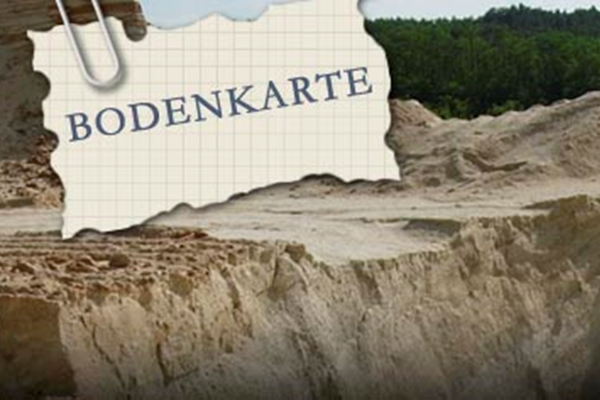eBOD - the agricultural soil map

On 9 January 2019, the new digital agricultural soil map and its applications were presented in great detail in the Gobelinsaal of the Federal Ministry and the Austrian Research Centre for Forests. Interest in the event and thus the use of the new map was very high, not only among people from the agricultural sector. The hall was filled to the last seat.
The event intended to give anyone working with soil a fist-hand impression of the agricultural soil map in its new revised, modern and user-friendly version to be used as a valuable tool for their work and their decisions.
Early on during the introduction, the need for a good soil map was underscored not only as a basis for agricultural practices but also, for example, for research and spatial planning. This was followed by a presentation of the new soil map in a live session. Then examples of how the soil map can be used for agricultural consulting, research (erosion and soil organic carbon) and spatial planning were described. At the end, there was some time left to ask the speaker questions and/or make comments.
Soil protection is a topic that has gained ever more attention over recent years, both nationally and internationally. Agricultural soils are at risk in many different ways. On the one hand due to the high land-take rate. But climate change, too, is already having a noticeable impact on account of the extreme weather events, including droughts and floods. That being the case, the biggest challenge is to ensure enough food supplies for the population both at a national and a global level, particularly in view of the fact that fertile soils cannot be reproduced. This makes it all the more important for research, politics and consulting to work hand in hand in order to master the challenges.
Therefore, a vigorous appraisal of the topic soil is crucial so as to adequately preserve soil in the best way possible as our production base, also for the future. The agricultural soil map drawn up by the Austrian Research Centre for Forests now provides an excellent starting point. Now that the map has been revised, management and consulting services will be better able to take into account the specific properties of soils. Thanks to the full digitalisation and elaborate parameterisation of the data, this information on soils, which used to be available as a hard-copy soil map with bound accompanying brochures, has now been upgraded into a cutting-edge digital soil information system and made user-friendly. In combination with the new Web GIS app, all this information can be used conveniently on any web-enabled device without having to install any software.
In conclusion, it can be said that the expert public is keenly interested in the new soil map and that there are good chances that this highly informative and handy map will be used more extensively than before in a wide range of areas with a view to ensuring the a sustainable use of the resource soil.
At the beginning of October, two new thematic maps were incorporated in the agricultural soil map: 'Nitrate retention capacity' and 'Useable field capacity'. The two maps are available at https://bodenkarte.at under the menu item 'Kartensteuerung' (Map control). The content is provided by the Institute for Land and Water Management Research of the Federal Agency of Water Management (BWA-IKT).